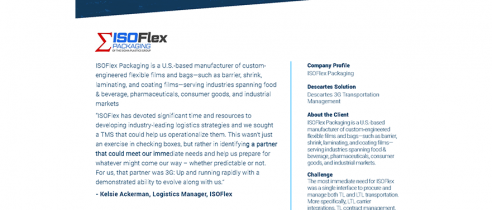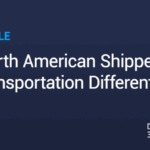Bills of lading are responsible for offering proof of shipment, evidencing the carrier-shipper contract, and obtaining payment/releasing the goods. They’re the backbone of logistics delivery, with import and export relying on paper-based bills for their international trade endeavor.
But just like the rest of the logistics industry, digitization is taking over, transforming the bills into cost- and time-effective electronic documents. The days of tiresome processing procedures are almost behind the logistics sector, giving e-bills the game-changer status they deserve.
Understanding Electronic Bills of Lading
An electronic bill of lading is the digital version of the traditional, paper-based document key in global trade. It serves three primary functions:
- Contract of carriage — Evidences the contract between the exporter and the carrier.
- Receipt of cargo — Acknowledges the cargo was loaded onto the ship.
- Title transfer or exclusive rights of cargo — Dictates the person holding the original copy is legally entitled to deliver it.
The electronic version was created to eliminate inevitable problems associated with hard copies, cut costs, improve efficiency, boost accuracy, and slash operation times. While it isn’t an ultra-new addition to the industry, the somewhat recent advent of cloud and blockchain technologies has elevated eBOL technology to all-new heights.
Traditional Paper Bills VS Electronic Bills
| Traditional Paper Bills of Lading | Electronic Bills of Lading | |
|---|---|---|
| Definition | Traditional bills of lading are paper documents that evidences the contract of carriage between the carrier and the shipper. | The eBOL is the electronic equivalent of the traditional paper bill of lading — a combination of the registered title and a document containing the eBOL data. |
| The Benefits | Commonplace in the industry Companies are comfortable with and trusting of this method Infrastructure and protocols are already in place Legislative and global frameworks already exist Not vulnerable to hacking or other cybercrimes Easy transaction recording | Eliminates the need and cost of letters of indemnity Reduces the time spent dealing with errors Minimizes human error Easily transferable Fast E-Bills of Lading Act has been introduced Environmentally friendly and sustainable Increases reliability Improves cashflow |
| The Drawbacks | High administrative costs Difficult to correct mistakes Inefficient when passing between various professionals Can be switched or forged Plenty of opportunities for human error | Industry participants can be resistant to change Brings new technological challenges to the sector Companies may not have the resources to implement them |
Streamlining Operations for LTL Carriers
Paper-based eBOL systems break the digital chain after the first operational step (i.e., digitally entering information before printing the paper BOL). The document then passes through myriads of hands, wasting time and unnecessary costs.
Electronic bills of lading flip that on its head, enhancing operational efficiency for less-than-truckload carriers by crafting a parcel-esque experience — the label is the only paper needed. Supporting digitization of both shipping and billing for all LTL industry participants, eBOLs allow for automation and eradicate a too-common error-and-rework source.
Improving Transparency and Visibility
Adopting eBOL technology significantly decreases the risk of cargo theft or loss and improves management by increasing transparency and visibility across the supply chain. With electronic bills, shippers and their customers benefit from real-time tracking, allowing them to keep a close eye on their goods as they move from one location to another.
This heightened visibility enables companies to address logistical hurdles proactively and more effectively, decreasing the regularity of errors for better customer satisfaction.
Cost Savings and Sustainability
Electronic bills of lading eradicate cumbersome, time-consuming processes, leaving new-found efficiencies in their place. As a result, they save businesses considerable money while reducing the industry’s carbon footprint through reduced printing.
Technological Challenges and Solutions
[ENTER CHART]
Industry Adoption
E-bills have been touted since the 1980s with minimal uptake due to the need for more legal frameworks, data and technological sophistication. However, the UK recently passed the E-Bills of Lading Act, and global governments have approved eight eBOL systems. As such, the industry has seen many companies adopt this digitized solution.
That said, recent data shows that only 1% of all bills of ladings are digital today. But this percentage will surely increase as businesses realize the required IT investment to accommodate e-bills is low, and standards have already been accepted by the nine container carriers representing 70% of related trade.
Future Trends
As eBOLs become widely adopted in the transportation industry, it’s evident that the technology will shape the future of global logistics. It’s expected that regulatory issues, privacy concerns, and cybersecurity pitfalls will be ironed out in the coming years, paving the way for increased adoption. AI and machine learning will likely play a more significant role in creating eBOLs.
eBOL Bottom Line
E-bills of lading are undoubtedly the way forward, provided the remaining kinks are addressed through technological and regulatory means. LTL carriers can expect a transformed professional landscape boasting incredible efficiency improvements, cost savings, and human error reductions.







